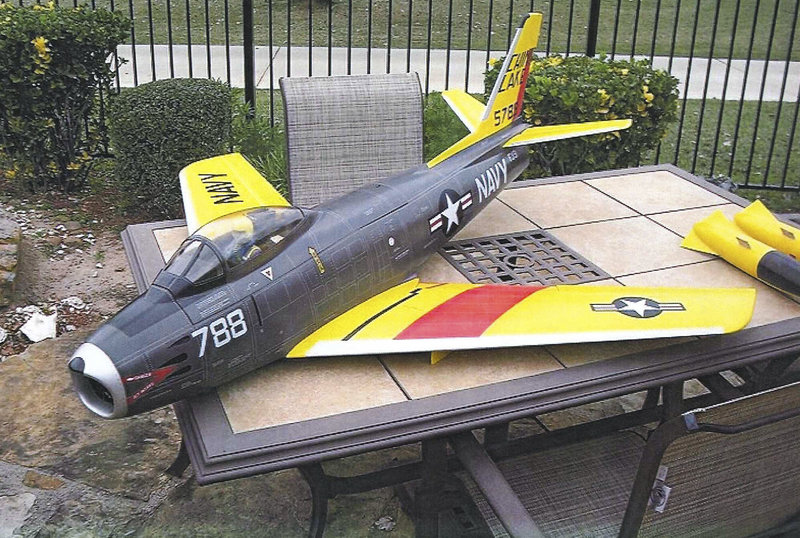BOSTON – Model airplanes are suddenly on the public’s radar as potential terrorist weapons. A 26-year-old man from a Boston suburb was arrested Wednesday and accused of plotting to attack the Pentagon and the U.S. Capitol with remote-controlled model planes packed with explosives.
These are not balsa-wood-and-rubber-band toys that investigators are talking about. The FBI said Rezwan Ferdaus hoped to use military-jet replicas that are 5 to 7½ feet long, guided by GPS devices and capable of speeds over 100 mph.
Federal officials have long been aware of the possibility that someone might try to use such planes as weapons, but there are no restrictions on their purchase — Ferdaus is said to have bought his on the Internet.
Counterterrorism experts and model-aircraft hobbyists said it would be nearly impossible to inflict large-scale damage of the sort Ferdaus allegedly envisioned using model planes. The aircraft are too small, can’t carry enough explosives and are too tricky to fly, they said.
“The idea of pushing a button and this thing diving into the Pentagon is kind of a joke, actually,” said Greg Hahn, technical director of the Academy of Model Aeronautics.
Rick Nelson, a former Navy helicopter pilot who is now a senior fellow at the Center for Strategic and International Studies, said Ferdaus needed to hit a window or other vulnerable area to maximize damage, and that would have taken precision flying.
“Flying a remote-controlled plane isn’t as easy as it actually looks, and then to put an explosive on it and have that explosive detonate at the time and place that you want it add to the difficulty of actually doing it,” he said.
Ferdaus, a Muslim American from Ashland, was arrested after federal agents posing as al-Qaida members delivered what he believed was 24 pounds of C-4 explosive, authorities said. He was charged with attempting to damage or destroy a federal building with explosives. A federal affidavit claims he began planning “jihad” against the U.S. in early 2010 after becoming convinced through jihadi websites and videos that America was evil.
Ferdaus had a physics degree from Northeastern University and enjoyed “taking stuff apart” and “learning on my own,” according to court papers.
The model planes that Ferdaus eyed were the F-4 Phantom and the F-86 Sabre, small-scale versions of military jets, investigators said. The F-4 is the more expensive of the two, at up to $20,000, Hahn said. The F-86, one of which Ferdaus actually obtained, costs $6,000 to $10,000 new.
Ferdaus’ plan, as alleged in court papers, was to launch three such planes from a park near the Pentagon and Capitol and use GPS to direct them toward the buildings, where they would detonate on impact and blow the Capitol dome to “smithereens.” He planned to pack five pounds of plastic explosives on each plane, according to prosecutors.
James Crippin, an explosives and anti-terrorism expert, said that much C-4 could do serious damage — a half-pound will obliterate a car. But he said getting a stable explosive like C-4 to blow up at the right time would have been hugely difficult.
And there were slim prospects of causing any serious damage to buildings like the Pentagon and Capitol, which are undoubtedly hardened to withstand explosions, said Crippin, director of the Western Forensic Law Enforcement Training Center.
“Basically, I think he’s suffering from delusions of grandeur,” Crippin said.
Hahn said the heavier of the two models that Ferdaus was allegedly planning to use could carry a maximum of two pounds of plastic explosive before malfunctioning. That’s not including the weight of any GPS system.
Remote-controlled aircraft have been considered by terrorists before. In 2008, Christopher Paul of Worthington, Ohio, a Columbus suburb, pleaded guilty to plotting terrorist attacks in the U.S. and Europe using explosive devices. Prosecutors said he researched remote-controlled boats and a remote-controlled, 5-foot-long helicopter.
Copy the Story Link
Send questions/comments to the editors.



Success. Please wait for the page to reload. If the page does not reload within 5 seconds, please refresh the page.
Enter your email and password to access comments.
Hi, to comment on stories you must . This profile is in addition to your subscription and website login.
Already have a commenting profile? .
Invalid username/password.
Please check your email to confirm and complete your registration.
Only subscribers are eligible to post comments. Please subscribe or login first for digital access. Here’s why.
Use the form below to reset your password. When you've submitted your account email, we will send an email with a reset code.